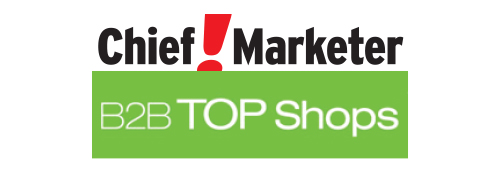by Dan Hansen | Mar 29, 2017 | Infographic
If you can guess where content development ranks as a focus area among marketing strategists, you can probably guess why it means a lot more than simply communicating with your audience. Words mean more these days, and there’s a very simple but powerful reason why.
by Dan Hansen | Mar 29, 2017 | Infographic
You’ve sent the most compelling e-mail offer ever, with a can’t-miss subject line that’s sure to make the open rate soar, and your client wanting more. And yet, it missed. Why didn’t your target audience care about it? Three words: functional title data.
by Dan Hansen | Mar 6, 2017 | Blog
Many clients have asked about best practices for their nurture program, so I’ve decided to tag-team with the head of Red House Analytics and Automation Group, Tracey Bartz, for a two-part primer on the subject. I’m covering the strategic thinking that goes into the...
by Dan Hansen | Feb 16, 2017 | Infographic
Could it be prospects making a beeline to your ads? The noise those ads are making? Or the sound of more MQLs ringing in your ears? To increase all of these sounds, snag better prospects, and get more of them, you need to clear a path from click to conversion. There’s a simple way to do it.
by Dan Hansen | Jan 1, 2017 | Blog
For the past three years, I’ve seen an unmatched focus on marketing technology adoption, integration and implementation across the Red House client base. So its no surprise that in our 2016-2017 Red House Marketing Survey, the number one focus for marketing...
by Red House | Dec 6, 2016 | News
Red House B2B Marketing has once again been named one of Chief Marketer’s 2017 B2B Top Shops, a listing of the top B2B marketing agencies in the United States.
by Dan Hansen | Nov 7, 2016 | Infographic
Even though you know that marketing automation is the cornerstone of today’s marketing success, it’s still difficult to get your world-conquering marketing automation initiative off the ground. But why? One reason stands out, and knowing how to conquer it can turn the...
by Dan Hansen | Sep 8, 2016 | Infographic
These days, the measure of your success can be as simple as the MQLs you develop, so it’s pretty important to know ahead of time whether your message is mighty, or mighty weak. The best performance predictor is, predictably, also the best way of insuring that your rollout doesn’t flame out.
by Dan Hansen | Aug 11, 2016 | Infographic
Your prospects have preferences. You already know that. But knowing which prospects like which forms of media—that’s knowledge with value. Because believe it or not, the majority of leads from companies with over $1 billion in revenue come from one form of media—and probably not one you’d expect.
by Red House | Jul 5, 2016 | Blog
Trying to figure out the right combination of systems and data sets for your organization is daunting. But more often, that’s the easy part. I’ve seen numerous clients who have implemented all the latest and greatest marketing and sales technology and are no better off because they are now drowning in data. Or the data is so disparate they don’t have access to the right information. And because of that, organizations lose insight into the progress of performance against goals.










